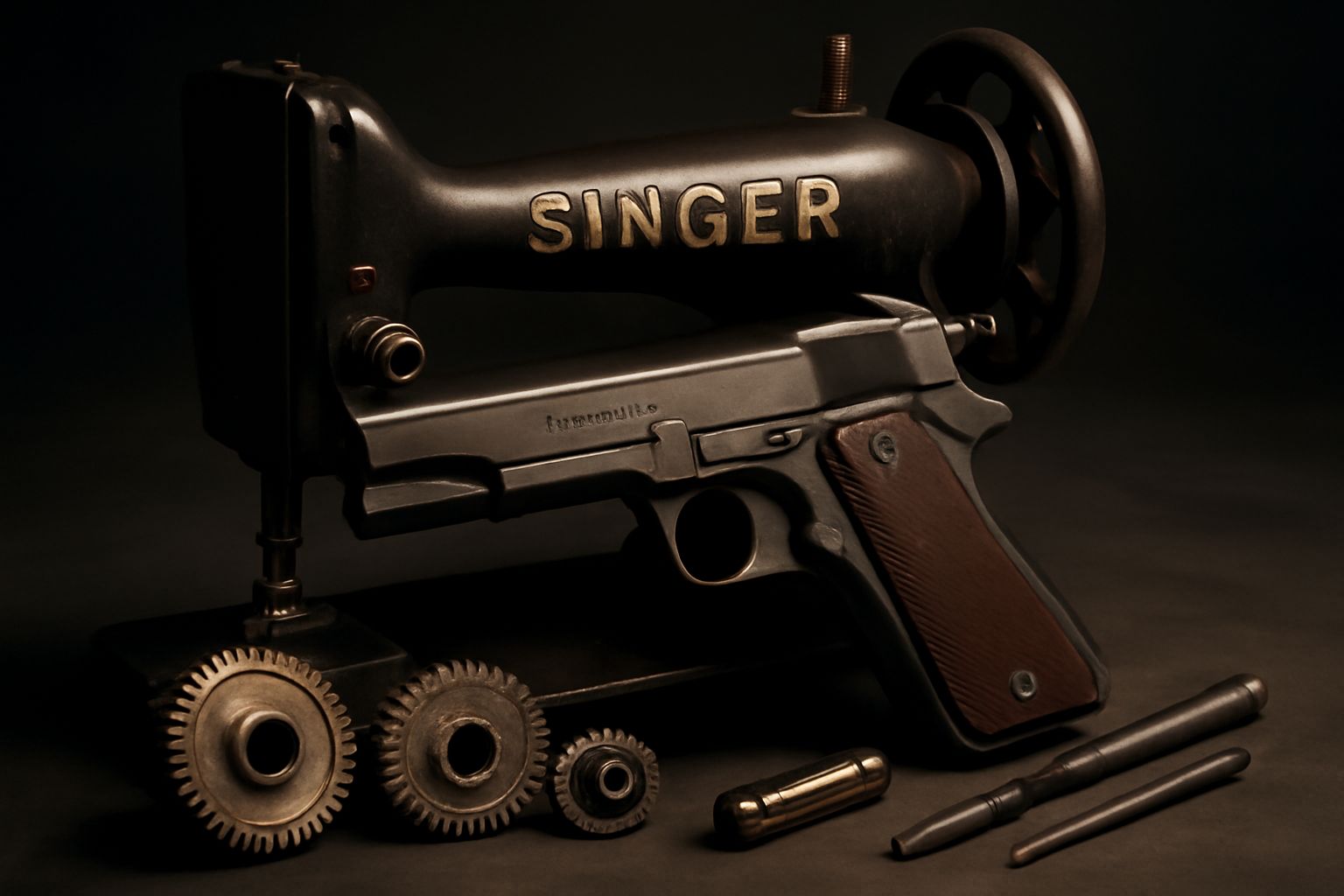April 17, 1940 – Elizabeth, New Jersey
It’s not every day the world’s most coveted combat sidearm emerges from a sewing machine factory. But in 1939, Singer—yes, the Singer of humming household bobbins—was tapped by the U.S. War Department to turn out 500 Model 1911A1 pistols as part of an “educational order.” This experiment aimed to see whether Singer’s machine-tooling precision could translate to the art of war. Spoiler: It could, and then some.
The task was ambitious: achieve a production pace of 100 pistols per hour. Singer didn’t hit that benchmark, but what they lacked in speed, they made up for in peerless quality. The company’s meticulous standards yielded pistols finished with the craftsmanship of a Swiss watch and the reliability of, well, a Singer sewing machine. The serials—S800001 to S800500—quickly became collector legend.
The War Department was so impressed that they didn’t ask for more pistols. Instead, they put Singer’s engineering muscle to work on ultra-precise aviation tools—navigation instruments and bomb sights—that would shape the battles to come.
Most of the 500 original “Singer 1911s” went to U.S. Army Air Force crews. Due to their assignment to high-risk flight crews, few survived the war, only adding to their mystique. Today, surviving Singer pistols are considered the “Holy Grail” of M1911s, fetching stratospheric prices at auction—one sold for over $400,000 in 2017.
A quip from a collector sums up their aura:
“If you find one of these at a garage sale, check your lottery numbers next.”
Twist: As the war raged, Singer’s original pistol tooling was shipped off to Remington Rand and Ithaca Gun Company to help fulfill the mass demand for 1.75 million M1911s—none of which, it’s said, quite lived up to Singer’s exacting stitch.
Sources: Popular Mechanics • Morphy Auctions • Sight M1911 • Wikipedia: Singer • The Hog Ring • Wikipedia: M1911 Pistol • Army History • AOL • Revivaler • Wikipedia: Isaac Singer • YouTube 1 • YouTube 2 • YouTube 3 • IWM • Rock Island Auction • YouTube 4

